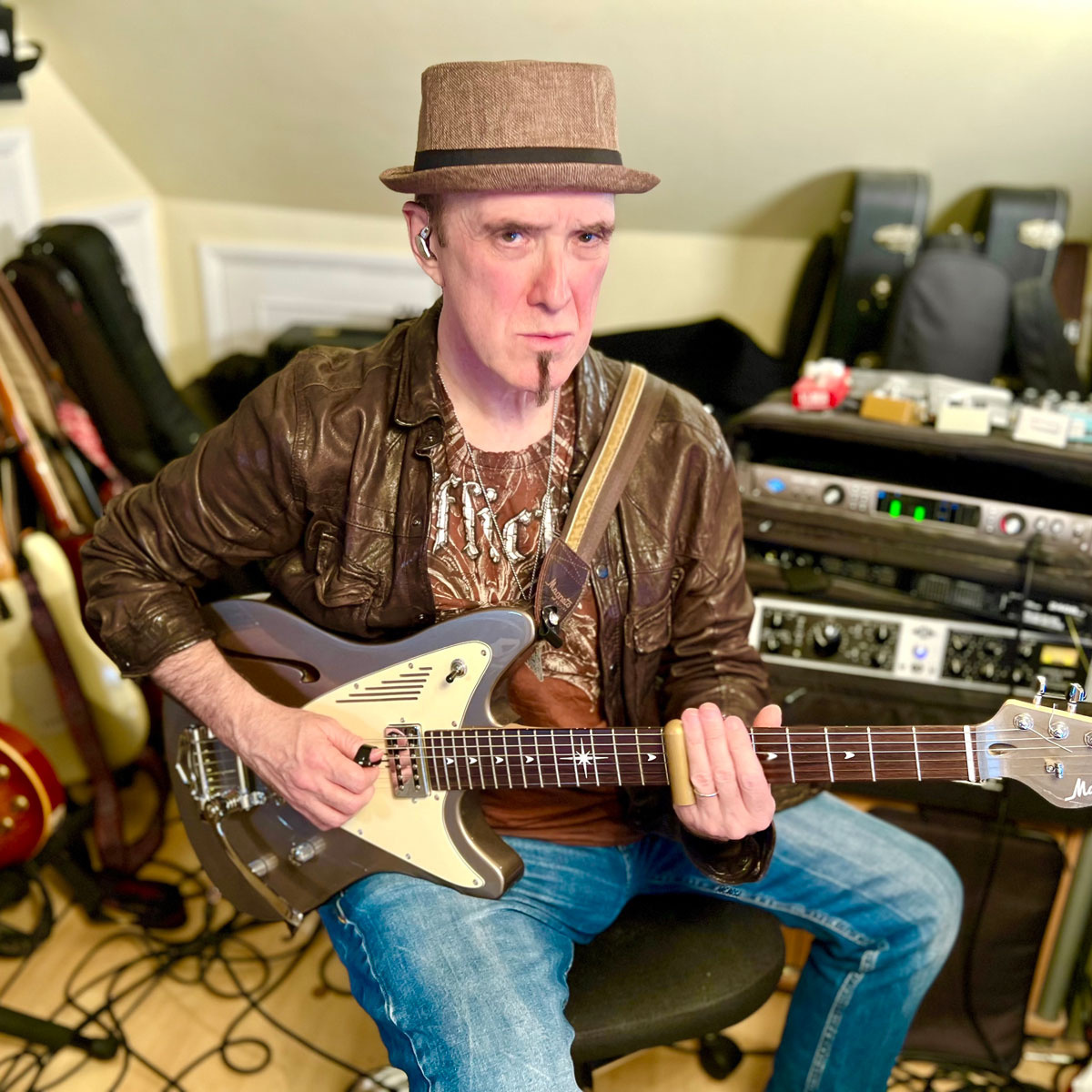A master of pickslanting, economy picking and pentatonic flurries, Eric Johnson is one of the smoothest soloists on the planet – and his techniques will really make your solos pop
Take a leaf out of the Texan Strat master's book and improve your picking technique, melodic sensibility and position shifting now with this lesson in Johnson's lead guitar style

Hailing from Austin, Texas, Eric Johnson integrates the influence of the blues greats with more modernistic harmonic structures and grooves. Eric is a virtuoso player with a unique style. One thing that distinguishes him is his incredible picking technique. His musical language is sophisticated and personal, and I’ve crafted this month’s examples as an intro to Eric’s style without making them too daunting.
The first is a bluesy phrase typical of Eric’s melodic phrasing. The use of the low A note states the harmony, and a lot of players who are used to working in a trio setting use this approach to fill out the texture.
The solo is a little more demanding but try piecing it together slowly and listening to the demo track for timing. In a few of the examples, we’ll show some lines that lay out some of the picking patterns that will help to unlock Eric’s fascinating style.
The key here is what is known as economy picking. This is where the pick strokes continue in the same direction from one string to the next, so as to reduce picking-hand movement (hence ‘economy’). You might notice that for the purposes of this article all the sweeps across strings occur on downstrokes. Full economy picking would involve using upstrokes to glide across adjacent strings the other way.
Much has been written about this approach. Eric often uses ‘pickslanting’ where the pick is held at an upward angle so the end that makes contact with the strings is higher than the blunt end.
A study of various prominent players would reveal that most of those who use sweeping or economy picking employ some form of pickslanting, and that some slant the guitar pick up or down, depending on the direction in which it’s travelling.
Another aspect of Eric’s playing that has been noted by many is his ability to change positions incredibly fluidly. Many people learn the various CAGED shapes of the minor pentatonic as separate entities, but Eric has command of the whole fretboard for all the scales that he uses. This is a great goal for any improviser on the guitar.
It’s also interesting to note the jazz influence on Eric’s playing. He has even recorded with modern jazz great Mike Stern. With this in mind, he seems to share the jazz player’s concept that it’s better to decide what you want to play and then find a way to execute it, rather than calculate what sounds most impressive using one’s natural capabilities or those of the instrument.
In the solo we’ve combined some of the ideas contained in the examples but they have been embellished to have more movement and seem less like exercises. Eric’s solos often contain very speedy playing, but I thought it more important to craft a solo that shows the picking approach and musical style, but doesn’t stray into particularly difficult territory.
Get the tone
Amp Settings: Gain 9, Bass 7, Middle 4, Treble 6, Reverb
Eric loves various types of guitar but somehow it always has the signature EJ tone. For lead you’ll need a heavily driven sound but with good note clarity. Eric has famously used fuzz pedals but not all of his sounds feature a fuzz. Combining a couple of overdrive pedals might get you close. You’ll need delay, reverb and maybe chorus pedal for both lead and rhythm sounds.
Example 1
Here we have a bluesy phrase that might be a logical opening statement for a solo. It’s based simply on the A minor pentatonic scale.
Example 2
Here we have the key to the picking-hand approach to this lesson. It’s about stroking across one or more adjacent strings with downstrokes.
Example 3
This starts with a wide interval approach up to the 9th degree of A minor. Eric targets this tasty note often, so why not try it in your improvisations.
Example 4
This shows another picking pattern, this time on a line that descends through A minor pentatonic scale. Practise it slowly at first.
Example 5
This starts with a Hendrix-style usison string bend, then adds triplets for rhythmic variety, something at which Johnson excels. The slides in bar 4 are an EJ staple.
Get The Pick Newsletter
All the latest guitar news, interviews, lessons, reviews, deals and more, direct to your inbox!
A professional guitarist for many years, Andy G Jones has played with Van Morrison, James Ingram, Lamont Dozier, Queen (Brian May and Roger Taylor), Robben Ford, Billy Cobham, John Illsley (Dire Straits), KT Tunstall, Albert Lee (featured on Andy's upcoming CD), Mike Finnigan, Dave Landreth and Ryan Voth from The Bros. Landreth, Malford Milligan, The BBC Radio Big Band, Patti Austin, Hamish Stuart (Average White Band), Lalo Schifrin (Hollywood film composer Bullitt, Mission Impossible), Hank Marvin, James Dean Bradfield (the Manic Street Preachers), Grady Tate, Agnetha from ABBA, Cliff Richard, Dudley Moore, Nathan James (Inglorious), Joey Tempest (Europe) and Kelsey Grammar.
“There are so many sounds to be discovered when you get away from using a pick”: Jared James Nichols shows you how to add “snap, crackle and pop” to your playing with banjo rolls and string snaps
Don't let chord inversions bamboozle you. It's simply the case of shuffling the notes around









![Joe Bonamassa [left] wears a deep blue suit and polka-dotted shirt and plays his green refin Strat; the late Irish blues legend Rory Gallagher [right] screams and inflicts some punishment on his heavily worn number one Stratocaster.](https://cdn.mos.cms.futurecdn.net/cw28h7UBcTVfTLs7p7eiLe.jpg)


